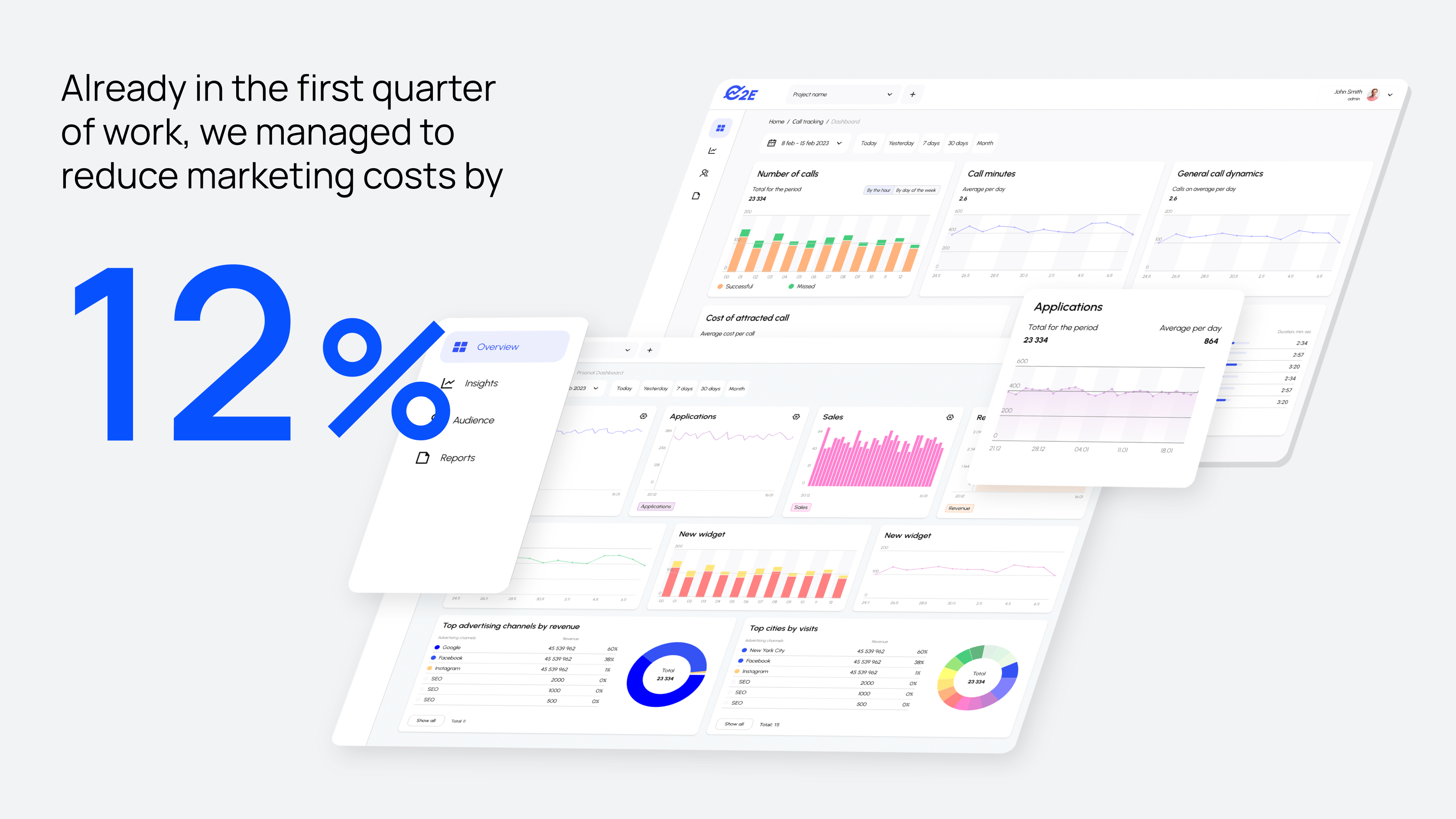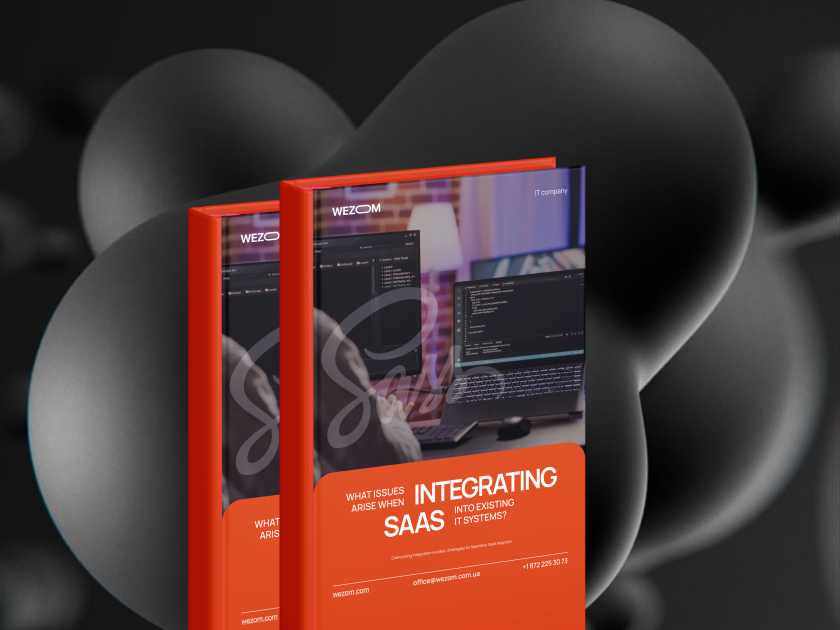The niche of complex software solutions for digital marketing is not yet crowded, but the demand for such products is steadily growing. These two factors prompted us to develop a custom SaaS development cloud-based solution for real-time insight from Google Analytics. We will tell you below how we coped with this task.
Backstory and the Goals
The implementation of the GDPR in Europe and the update of generally accepted digital data security policies resulted in a ban in some countries on the Client ID, which was used to store user data from Google Analytics.
In this regard, we decided to develop a cloud-based SaaS solution for real-time analytics that would help its users to analyze conversion channel separately and, in general, have similar functionality and even surpass the capabilities of such popular services as Roistat and OWOX. Instead of Client ID, we decided to integrate User ID to provide our clients with the level of privacy required by the new policies for their personal data.
%20(1)%20(1)%20(1).png)
What Did We Get at the Stage of Data Analysis?
Before proceeding with the implementation of our custom development solution and choosing the optimal set of its features, we conducted a thorough analysis of the market demand for the relevant digital marketing products. The following conclusions were obtained:
- for SMM – 27.8% + 15% growth potential;
- for Email marketing – 22.1% + 4.5% growth potential;
- for SEM (Search Engine Marketing) – 19.5% + 9.7% growth potential;
- content marketing – 18.6% + 14.5% growth potential;
- for web and mobile analytics – 24.8% + 7.2% growth potential.
As we noted earlier, to take a sustainable competitive position in the international market, we needed to create a comprehensive solution that would cover all these types of digital marketing simultaneously. Thus, we settled on developing a solution for web and mobile analytics, social media analytics, as well as analytics for advertising campaigns and affiliate programs.
.png)
What Did We Get after CustDev, Which Was Tested on the Audience of a Potential Consumer?
To correctly present our product to its target audience, we previously developed unique client profiles. After this study, three groups of potential customers were obtained:
- small and medium-sized businesses;
- advertising agencies;
- individual marketing experts.
With regard to the geographical location of our potential clients, the main market shares belonged to the following countries:
- USA - 38.5%;
- Great Britain - 11.8%;
- India - 5.6%;
- France - 3.81%;
- Canada - 3.26%;
- other countries – 40.5%.
At the same time, the most solvent audience is in the United States, Canada, Australia, and the UK, which also made it easier for us to position our product for its potential customers.
%20(1).png)
In general, our research was carried out in several stages in nine highly specialized areas, which also included manual testing and the study of user feedback on products. After that, we conducted 27 interviews with representatives of our target audience to determine what they expect to receive and what aspects of this product will provide it with a competitive advantage against the background of existing analogical products.
Our research ended up with a quote analysis that helped us establish a reasonable cost for our consultant end-to-end analytics solution, comparable to other off-the-shelf SaaS products in the digital marketing niche.
What MVP Do We Want to Develop as a Result?
Now we propose you find out what functionality our finished custom product should have had.
Admin panel
The administrative panel of our end-to-end analytics web solution should include two main types of users:
- super administrator;
- managers with limited access (that is, with access to individual resources, types of analytics, and reports).
In the future, we plan to expand the roles of users, but the above two will be quite enough for the successful launch of the MVP.
.png)
Also, we adopted the principles of administration from Google Analytics. The option to limit connected email accounts is currently under consideration.
As for user account capabilities, they will allow clients of our solution to centrally monitor all their resources (websites and applications). We also decided to introduce the option of sharing access to the same resource for both a specific user and a group of users. After that, we planned the view setup, i.e., reports that will be visible to certain managers. For example, these can be reports on SEO, SMM, ad and affiliate programs, conversion analytics, product analytics, etc.
Reporting
Reporting in our solution will be channel-based, and the data will be obtained from Google Analytics and AMO. This will allow users to analyze conversion channels separately, including the following fields:
- resource (website or application that was added by the super-admin);
- the period from [date] to [date];
- channel;
- the number of quotes;
- conversion from orders to sales;
- sales;
- conversion to sales;
- the average check based on the cost of the application from the AMO.
Also, let’s talk about reporting on channels for a specific lead. The data for the following fields will be available here:
- User ID from Google Analytics;
- link to the lead in AMO;
- status of the quote;
- cost;
- channel.
Now a few words about traffic reporting. It can be based on organic traffic (it will be different for each page), e-commerce results (it will also be unique for each page), and some other goals.
.png)
Reports with integration with Google advertising campaigns deserve special attention: they will be compiled based on the geographic location of visitors and have the ability to additionally filter traffic.
And finally, let's talk about general reporting: it can be compiled either for all projects that are connected to the account at once or for individual goals.
The frequency of data updates in the service
Since our product must provide extremely up-to-date data, it will be updated regularly, once an hour.
Conclusion
Currently, our product is under development of its MVP version – that is, a solution for web analytics that would help its users with efficient distribution of costs on digital marketing needs. Further, we plan to expand its functionality according to the plan described above, as well as supplement it with features that will be discovered at the stage of user testing.
UPD: During the first quarter, MVP managed to reduce marketing costs by 12% through the use of our product,
instead of working with boxed analytics services for a subscription.

